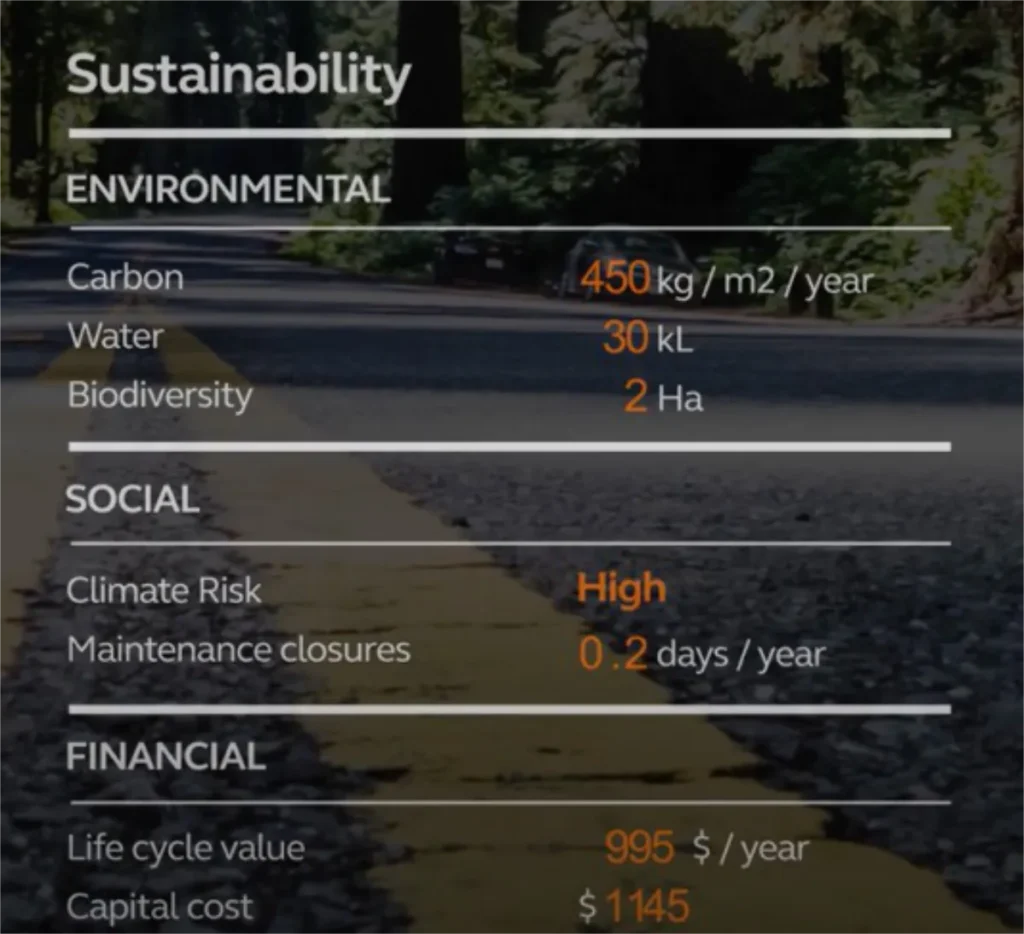Making Sustainability Considerations Visible and Communicating them to the Client
Major Freeway Construction Project in NSW
Ken Lunty, Technical Director, National Discipline Lead, Sustainability, Arcadis
The Opportunity
What if you could visualise the life cycle carbon footprint of infrastructure design before committing to a decision? How would it influence the design and procurement process to include more than the traditional criteria of program and capital cost, but also about whole of life environmental, social and economic factors?
While different disciplines tend to be good at coordinating the design and delivery of a project, sustainability assessment is traditionally undertaken in isolation and late in design. Usually, it’s too late to make changes. Additionally, the optimisation of design usually focuses on replacing virgin materials with recycled ones. This is a specification focused approach rather than a life cycle approach based on holistic performance. We cannot capture the full sustainability impacts of a design through the narrow lens of recycled materials and capital cost. This doesn’t go far enough.
Objectives – Pavements – Better Shared Path Design
Arcadis undertakes a life cycle assessment which can cover raw materials, manufacturing, installation, maintenance, demolition and end of life. Using industry recognised and standardised assessment methodologies, they quantify the sustainability outcomes of different pavement design options – including current standard design options as well as alternative, innovative ones developed with sustainability considerations.
For a major infrastructure project in Australia, Arcadis conducted an assessment of the singular pavement design permitted by the client as part of a larger project. The long-term sustainability outcomes were one of the worst for the project – around 7.4kg CO2 equivalent emissions per square metre of pavement per year of design life. They assessed a range of different options and developed a pavement design that reduced CO2 emissions by 35% on a mainline road. Using the same approach, Arcadis were also able to identify a 75% reduction in life cycle carbon for a shared user path. This out of scope design was accepted by the client based on its holistic advantages over the reference design.
A Different Approach
Inspired by the nutritional labels you find on products in the food sector, Arcadis have implemented a Sustainability Assessment Tool that includes whole of life environmental, social and economic measures. At a glance, to inform better designs and sustainable outcomes, we can see how different designs compare. Further, by making sustainability visible and accessible to all project decision makers, they can make better informed design and procurement decisions.

Key Learnings
- Making sustainably visible is empowering for designers and procurement specialists, giving them intuitive information.
- By making sustainability visible and accessible to all project decision makers, they can make better informed design and procurement decisions.
- When presented with this information, procurement decision makers typically chose a more sustainable option, compared with the reference design.